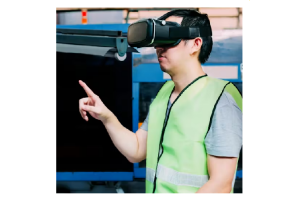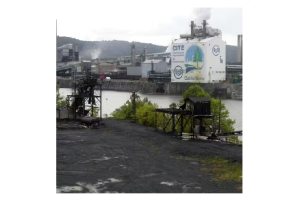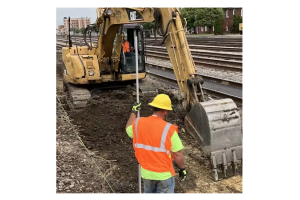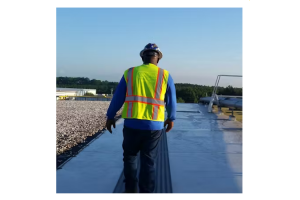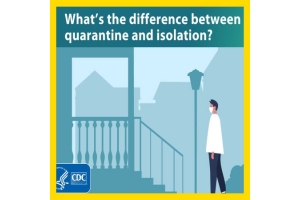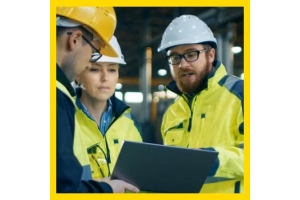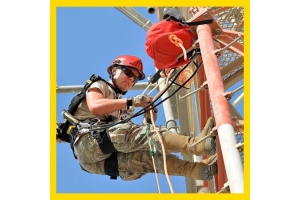Currency
-
October 26, 2019High-rise construction site workers aren’t treating evacuation alarms seriously enough and are “risking their lives” by not responding immediately, new research reveals today.
Rather than head straight for the emergency exit, a third of workers who took part in evacuation trials spent more than a minute finishing a task, with the longest time to respond to an alarm being almost six minutes.
And once they completed their task, a quarter undertook four or more other activities, such as collecting tools, prior to starting to evacuate – decisions which can waste critical seconds in a real-life emergency.
Researchers from the University of Greenwich, funded by IOSH, also found that more than two in five needed their supervisors to instruct them to leave the site, while many believed their employers viewed it more important than they did to complete tasks before evacuating.
The IOSH-published research, called Construction site evacuation safety: -
October 26, 2019When it comes to industrial hard hats, one size does NOT fit all. Learn how to choose the right headgear for the right application.
Fall-related injuries and fatalities number in the hundreds of thousands every year, and for many years they’ve been a serious issue for safety managers and their workers. It seems obvious that companies need to get more proactive in their insistence that their workers wear protective helmets, but in fact, it’s not a simplistic answer. There are numerous choices of helmets and headwear for various industries—construction, oil & gas, utilities, and general industry—and one size most definitely does NOT fit all.
This eBook will help you determine how to choose the right headgear for the right application. We’ll take a look at the various standards for hard hats, how to properly care for and use these hats, and help you determine when a hat has reached its “expiration date.” You’ll also learn the key considerations in choosing the proper -
October 26, 2019October 6-12 was Fire Prevention Week, and the National Safety Council has compiled a handful of tips for fires: how to prevent them and how to react to them safely.
Despite a recent decline in home fire deaths since 1980, fire is still the third leading cause of death for children ages 1 to 14. According to Injury Facts, over the last few decades, deaths from home fires have gone from 5,200 in 1980 to 2,710 in 2017. However, NSC Injury Facts also reports that 127 children between 1 to 14 years of age died from fire and smoke in 2017 alone.
Fire safety is tricky: while the “stop, drop, and roll” phrase is still important and applicable, it is not the only consideration when keeping homes—or other locations—safe from fires. People need to know how to prevent them and how to react when they do happen.
Home fires have some notable trends.
-
October 26, 2019Finding a hazard in need of a fix may be obvious after an incident occurs, but what about predicting in advance where to focus your safety and health resources to prevent injuries? In November 2019, the Occupational Safety and Health Administration (OSHA) will convene a stakeholder meeting to gather examples and success stories with safety and health leading indicators.
Finding a hazard in need of a fix may be obvious after an incident occurs, but what about predicting in advance where to focus your safety and health resources to prevent injuries? In November 2019, the Occupational Safety and Health Administration (OSHA) will convene a stakeholder meeting to gather examples and success stories with safety and health leading indicators.
OSHA notes in its recent notice that many employers use lagging indicators to track when safety and health problems occur, but these metrics only catch our attention after it’s too late. As a result, it advises that employers “also consider -
October 19, 2019Millions of workers are exposed to hearing hazards every year, and even though OSHA regulations and NIOSH recommendations in the U.S. specify hearing protection, occupational hearing loss is still the number one reported worker illness in manufacturing*. Moreover, noise-induced hearing loss is permanent and irreversible, but avoidable with the help of proper hearing protection and other measures. Here we will explore some hearing protection devices (HPD) and other steps that can be taken to help protect workers’ hearing in a wide variety of industries.
Earplugs
When workers are exposed to loud noise, earplugs can offer low-cost, effective hearing protection. These are soft foam or elastic plugs worn inside the ear canal to help block out hazardous sounds. Earplugs come in a wide variety of shapes and sizes so there are many choices for workers. With -
October 19, 2019Visual dashboard of noise patterns and exposure levels helps reduce health risks and improve safety programs.
Honeywell (NYSE: HON) today announced a new smart hearing solution that combines cloud-based software and connected, protective headsets to monitor sound in real time and analyze patterns to help companies better protect workers from noise-induced hearing loss.
The VeriShield Smart Hearing Solution comprises a protective headset that reduces background noises to safe levels within the headset, allowing workers to communicate more clearly and easily. The headsets continuously collect and transmit noise-related data to Honeywell Safety Suite, a cloud-based service that automates and streamlines the collection and reporting of critical safety intelligence. Supervisors and workers can monitor and view noise exposure data, including noise peaks, patterns and unusual occurrences, on their smartphone or mobile computer using the Honeywell VeriShield mobile app.
-
October 19, 2019
How to evaluate and improve program effectiveness.
As one of the main pillars of OSHA’s Hazard Communication (HazCom) Standard, employee training is a critical part of not just workplace safety, but your company’s regulatory compliance. However, HazCom training is also one of the most commonly overlooked elements of safety programs, with many employers struggling to make it effective, engaging, and relevant.
For HazCom training to be effective, those undergoing training must be able to comprehend the hazards and understand how to protect themselves. While OSHA does not expect workers to be able to recall and recite all data provided about each hazardous chemical in the workplace, the most important aspects of HazCom training are that employees are aware that they are exposed to hazardous chemicals, know how to read and use labels and material safety data sheets, and, as a consequence of learning this information, are following the appropriate protective measures established -
October 19, 2019The GCCs’ construction industry continues to grow. According to a survey in April 2019 by law firm Pinsent Mason, construction companies in the area expect to receive more orders this year than last, with Saudi Arabia identified as being the leading market to deliver growth.
With the increase in large construction projects – the majority of the companies surveyed are involved in projects with a value between US$27.22mn and US$136.12mn – comes an increased focus on health and safety management programmes. Adoption of updated international Occupational Health and Safety (OH&S) standards means many multinational corporations and government bodies are now leading the way in best practice by implementing robust risk-based programmes which seek to protect both the employee and the employer from harm.
The PPE market
One very visible development -
October 13, 2019Choosing effective and energy-efficient LED lighting for construction sites can help ensure workers stay safe and well, day and night, and can save money at the same time, says OnSite Support Director Damian Lynes.
Providing adequate lighting is a key consideration for the construction industry, particularly at this time of year. Aside from increasing the risk of accidents, poor lighting can cause eye strain, migraines and headaches, all of which can affect productivity and the bottom line.
Choosing the correct lighting for site goes beyond the fairly straightforward choice of light towers for outside areas, lights on tripods, small, portable task lights and so on, and into the more complex choice of the light source.
This is because different light sources (ie halogen bulbs, fluorescent tubes or LEDs) have varying characteristics, which include the colour and shape of the light cast, energy efficiency, lifespan and cost.
Bearing all these factors -
October 12, 2019Don’t neglect your feet when choosing safety footwear.
Safety boots have come a long way in the last few years, and the availability of choices in safety footwear is staggering. Safety boots can vary widely in quality and features. When considering safety footwear, certainly you want to consider the level of protection your boots are going to provide given your work environment, but you also want to take into consideration the features they offer with regard to comfort and overall foot health.
Let’s face it, when you’re on the job, and potentially on your feet for hours at a time, you don’t want to be distracted by your feet. So, what do you want to consider when choosing safety footwear?
Certification
Certainly, one of the first things you want to look for is a boot that is certified to ASTM F2413 for toe protection.
